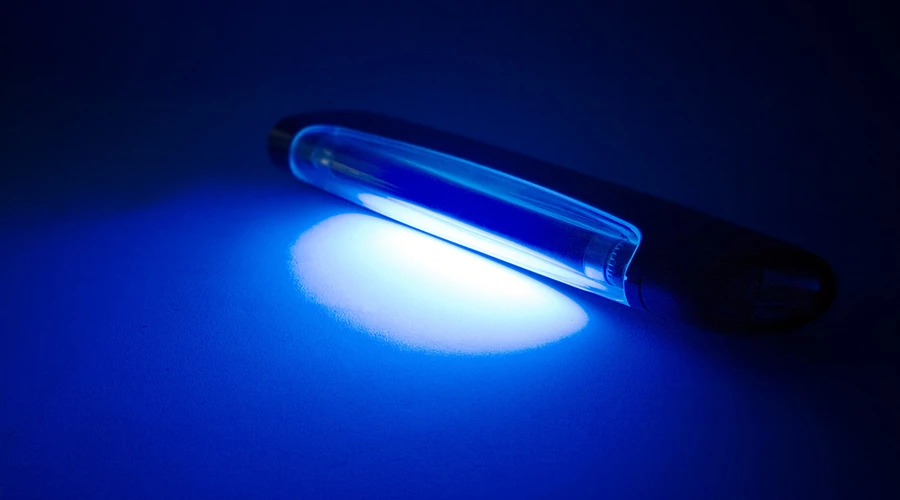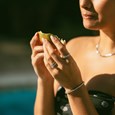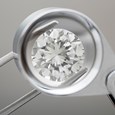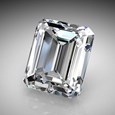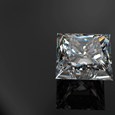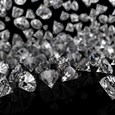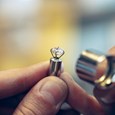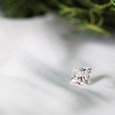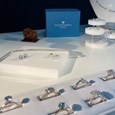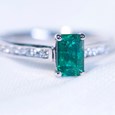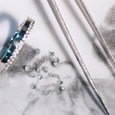Sign up for our Newsletter
Is Diamond Fluorescence Good or Bad?
March 12 2022
Diamond fluorescence is a point of some contention in the industry. Some say it is bad. Some say it can be good.
If you’re busy shopping for that special something it can add confusion to the otherwise exciting prospect of buying a diamond. So here at Quality Diamonds, we thought we’d take a look at diamond fluorescence, and get to the bottom of this strangely glowing topic.
What is diamond fluorescence?
First what it’s not: Diamond fluorescence is not some strange radioactive action of the diamond. That means no, the industry is not busy selling radioactive stones to valued customers for their special occasions. It also means you won’t become a superhero if you buy one. Sorry.
Now for what it is: Fluorescence is the result of ultraviolet (UV) light reacting with trace minerals which are sometimes found trapped inside a diamond. If you've ever seen stark white teeth appearing to glow beneath strong UV lights then you've already witnessed a similar effect. As sunlight contains UV light this effect can sometimes be seen naturally in daylight. In the case of diamonds, fluorescence is essentially a term for the visible light some gems emit when exposed to UV light.
When and how will it glow?
This effect in action means that certain diamonds containing these trace minerals can seem to glow when exposed to sunlight. This particular behaviour is measured in a laboratory alongside all the other tests that lead to a diamond gaining certification. Diamond fluorescence is graded on a scale of none, faint, medium, strong or very strong.
Around one-third of diamonds will fluoresce to various degrees. However, of those diamonds, only one in ten will do so to a level that could visibly impact the appearance of the diamond. Those diamonds are graded as having medium, strong or very strong fluorescence. Any diamond graded as ‘none’ or ‘faint’ is an indication that fluorescence will not impact the look of the diamond.
To make it a little more difficult not all diamonds fluoresce in the same colour. They can fluoresce in blue, yellow, red or even green. However, the vast majority of diamonds which display fluorescence do so in a shade of blue.
Good glow or bad glow?
So the real question is, are these glowing diamonds a good thing or a bad thing? The answer to that depends on the certification of the diamond itself. Traditionally, there has been a feeling in the industry that fluorescence is an undesired attribute in diamonds, however, this attitude has relaxed somewhat over recent years.
The real effect of fluorescence on a diamond’s visible appearance is more considered now. It’s also important to note that the trace minerals do not in any way compromise the structural integrity of the diamond. These tiny trace elements won’t put your shiny, diamond engagement ring at risk. Certain diamonds can actually benefit from a degree of fluorescence.
There are two significant factors to consider when deciding if fluorescence is good or bad for your diamond. The first of those is the colour of the fluorescence. A diamond which fluoresces blue, the most common colour, can often appear whiter than its true colour grade under UV light. For an industry that values the beauty of a pure white diamond, that’s no bad thing. However, if a diamond fluoresces in a different colour, such as yellow, it can give the diamond the appearance of a lower quality, ‘dirty’ diamond and as such be highly undesirable.
A second point to consider is the strength of the fluorescence. If a diamond has a particularly high level of fluorescence this does run the risk of the stone looking hazy or oily in the wrong light. In this case, the fluorescence can cause the diamond to appear a lower quality than it is, which reduces its value. Obviously, these effects would only take place when subjected to UV rays, but that means no sunny garden parties showing off your shiny, special diamond.
A personal choice?
When it comes down to it, fluorescence can be a personal decision. A GIA study on consumers’ visual perception of diamonds showed that many people actually preferred the look of diamonds with a medium to strong fluorescence. Ultimately, this demonstrates that the real question is: does the diamond look beautiful in the way you want it to?
Some people may be concerned about buying a diamond that has an incorrect (higher) colour grade due to fluorescence, and thus paying more than they actually should. Quality Diamonds, like all good diamond retailers, use only recognised and accredited certification laboratories to ensure that the diamond you buy is exactly what it says it will be. That means there’s no risk of buying a fluorescent diamond that’s actually an L colour grade masquerading as a J.
Diamond fluorescence is just one factor in picking that perfect diamond. The majority of diamonds will not fluoresce with a strength that is visible. Those few that do, it’s not always a bad thing. The choice is down to you. In the end, just make sure you get the diamond you want and deserve.
Shop our range of loose diamonds here
If you wish to learn more about our Bespoke services, click here.
If you wish to contact us, click here.
Find us on Instagram @QualityDiamonds
-
Ethically Sourced Diamonds
-
Handmade in the UK
-
FREE Shipping Worldwide
-
60 Day Returns

